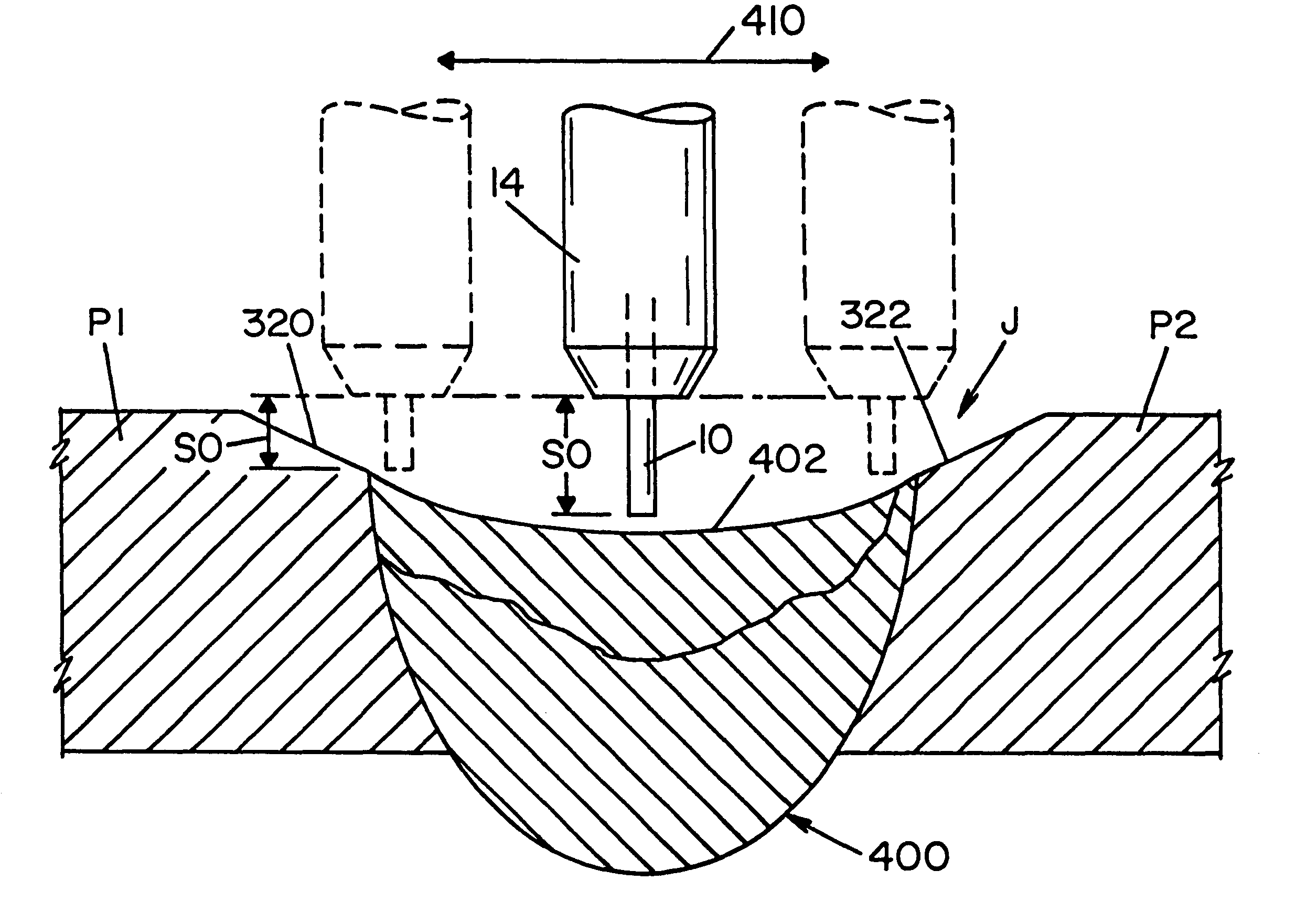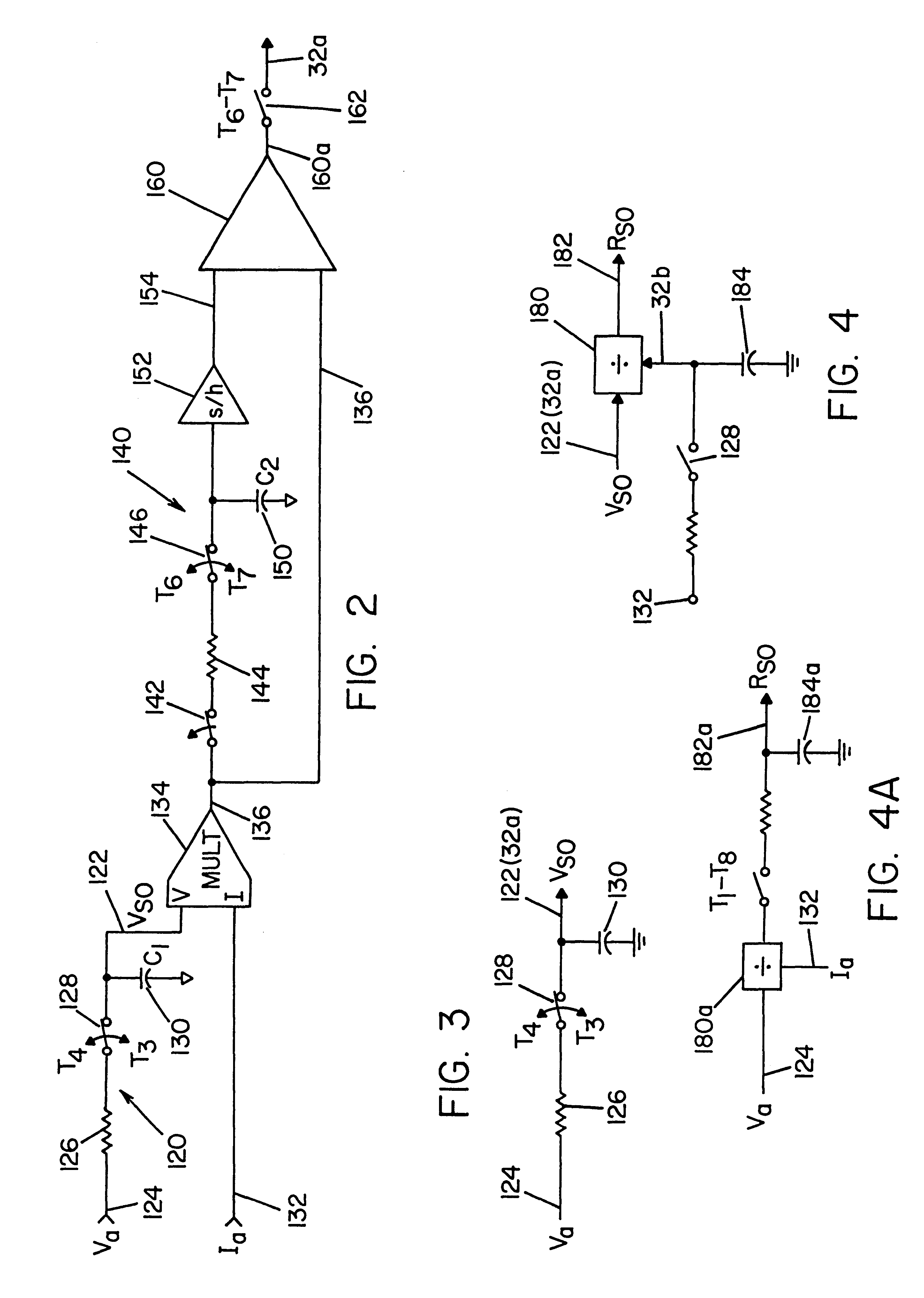Method and apparatus for electric arc welding
a technology of electric arc welding and welding apparatus, which is applied in the direction of arc welding apparatus, welding apparatus, manufacturing tools, etc., can solve the problems of increasing the number of wires sticking ou
- Summary
- Abstract
- Description
- Claims
- Application Information
AI Technical Summary
Benefits of technology
Problems solved by technology
Method used
Image
Examples
Embodiment Construction
Referring now to the drawings wherein the showings are for the purpose of illustrating a preferred embodiment of the invention only and not for the purpose of limiting same, FIG. 1 shows a high frequency DC switching power supply PS for passing a welding current through welding wire 10 to workpiece 12 while the wire is supported in an electrical connector or holder 14. An appropriate wire feeder 16 pulls wire from a supply spool 18 at a rate determined by the setting of the power supply as adjusted by the operator or programmer. Holder 14 is connected to terminal 22 of the DC power supply PS to receive a DC pulse between terminals 20 and the opposite polarity terminal 22. The shape of the DC current pulse is determined by an appropriate wave shape circuit 30 having a current control 32 with an output 32d for adjusting the current of a welding cycle. This adjustment of current can involve changes in the maximum current, peak current, background current, etc. Wave shape circuit 30 is ...
PUM
| Property | Measurement | Unit |
|---|---|---|
| time | aaaaa | aaaaa |
| time | aaaaa | aaaaa |
| time | aaaaa | aaaaa |
Abstract
Description
Claims
Application Information
 Login to View More
Login to View More - R&D
- Intellectual Property
- Life Sciences
- Materials
- Tech Scout
- Unparalleled Data Quality
- Higher Quality Content
- 60% Fewer Hallucinations
Browse by: Latest US Patents, China's latest patents, Technical Efficacy Thesaurus, Application Domain, Technology Topic, Popular Technical Reports.
© 2025 PatSnap. All rights reserved.Legal|Privacy policy|Modern Slavery Act Transparency Statement|Sitemap|About US| Contact US: help@patsnap.com



